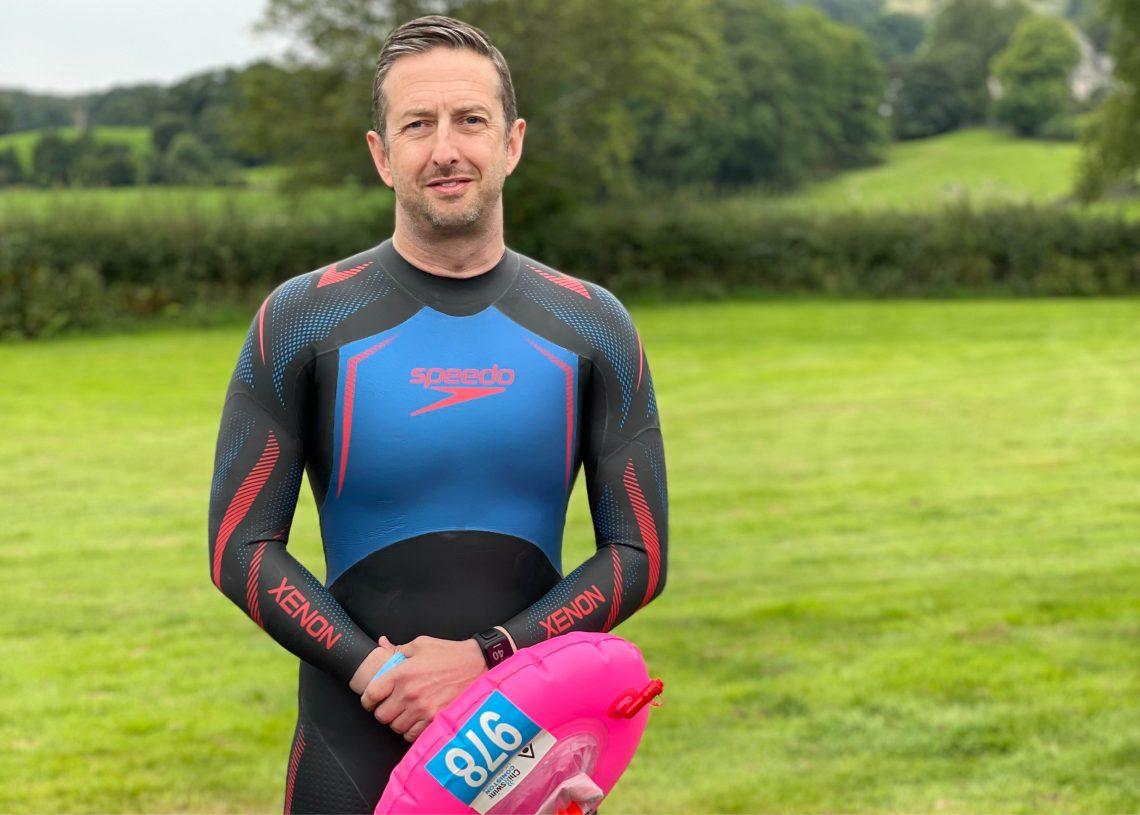
How to design the perfect pair of goggles
What goes in to designing the perfect pair of swimming goggles? They might look simple but a lot of time and effort goes in to getting them right. We turned to award-winning designer Chris Johnson to find out.
Chris Johnson started designing goggles when he joined Speedo in 2007 as their Senior Designer in the research and development department. He describes the job as a “dream come true”, allowing him to combine his passions of swimming and design. In 16 years at Speedo he designed or led the design for goggles for use across the full breadth of the swimming community, from goggles for kids to open water and high-performance swimmers.
Goggles, it turns out, are difficult. “One of the most complex products I’ve ever designed,” says Chris. He goes on to explain how they must perform numerous functions on a small area of the body. In addition, as sight is our primary sense, any changes around the eyes and face, and to our vision, are acutely noticeable. “Goggles must also meet the specific requirements of materials, strength, shape and size parameters of ISO international standards and FINA competition rules, ensuring consistent quality for swimmers and the integrity of the sport,” he says.

Make or break
Goggles have become vital equipment for swimming, both protecting our eyes and allowing us to see underwater. “Our core needs from goggles are fit, comfort, clear vision and an appealing aesthetic style,” says Chris. “Then there are various other needs depending on the activity. However, a few millimetres can make the difference between a watertight, comfortable goggle and one that leaks. They can make or break your swim.”
Fit
Chris explains that most goggles are designed and manufactured to fit and adjust for the global population, while everyone’s face shape is unique. Faces are generally not symmetrical, and one of the biggest dimensional differences between individuals is the distance between the eyes. Other factors influencing fit include the effect of age on skin elasticity, meaning skin stretches more easily underneath a goggle gasket inducing leakage more easily; and opening one’s mouth during swimming can also alter the face shape and encourage a gasket to dislodge and leak.
Comfort
At the extreme end of the scale, a goggles must be comfortable enough to wear for up to 20 hours (or more!) for a channel swimmer. Ergonomist Stephen Pheasant defines comfort as the absence of discomfort, and Chris believes this statement nicely summarises the issue. “If the design can remove all the elements that cause discomfort, the swimmer can forget they are wearing goggles and relax, focussing upon their swim.”
It’s the job of the gasket, the soft rubber moulding surrounding the lens, to achieve fit and comfort. Manufacturing goggle gaskets can be complex due to their intricate form, but fortunately, technologies such as 3D printing are becoming more available for mass manufacturing, where almost any complex form is achievable.
Vision
Clear vision is paramount, says Chris. Distortion can occur if a lens surface isn’t flat. And the shape, and lens tint options offered, need to cater for the many different swimming activities; for example, a competitive swimmer requires clear vision, and sharp contrast from which to gauge distance and to spot the wall for a fast and efficient turn in a race.
“Aesthetics and style are equally important. The various functions of fit, comfort, and vision must be beautifully sculptured into a coherent style that aligns with the brand’s look and feel; appealing to the type of swimmer engaged in that activity. Racing goggles, for instance, need to convey a sense of speed,” says Chris.
New technology
We also wanted to know what Chris thinks are the most exciting new innovations in goggles.
“I’m always interested to see the latest evolution of digital technologies in swimming products,” he says. “These technologies need to be assessed to see if and how they can be integrated into goggles for a meaningful improvement to the user experience. The heads-up display goggles options currently on the market make useful companions to your swim experience, providing training performance data and live training programmes to follow. The potential for this technology in outdoor swimming is very exciting, as it could help address aspects of personal safety, for example, by monitoring body temperature, water temperature, etc. Other developments, such as the increased use of sustainable materials in goggles, are great to see, and hopefully, this trend continues to evolve.”
Can goggles improve your swimming?
Finally, we wanted some advice on choosing the right goggles. Chris first stated the obvious, that selecting goggles is a personal choice, but then added a little more to think about.
“The right goggles fulfil the core needs described above, allowing a seamless swim without distractions, where you’re at one with the water and your equipment isn’t a hinderance, but an enabler which helps elevate the experience. You should choose goggles that eliminate unnecessary pauses for adjustments, so that you can swim comfortably for as long as you wish without pain or aching from goggle pressure on your eye sockets. Confidence in the chosen style enhances your overall look, builds trust in your goggles over time, and promotes relaxation, clear thinking about your technique, and awareness of your surroundings.”
Chris Johnson now runs his own design and innovation studio focussed on the research, design, development and manufacture of performance sportswear and equipment.
His recently published book Design Lead Succeed: 48 Rules for Bridging the Gap from Designer to Design Leader is available on Amazon.








